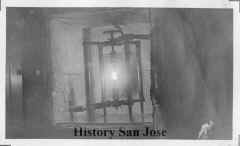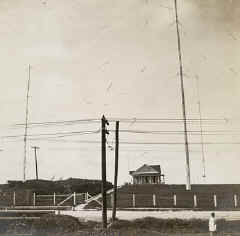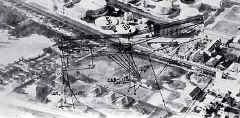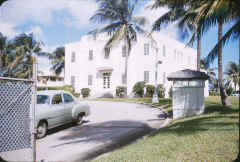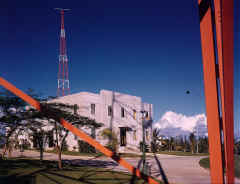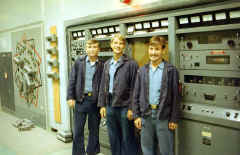NCS San Juan - estab. 1904, Originally in San
Geronimo (Puerta de Tierra), then Carolina-Isla Grande
Comm Center moved to Fort Allen in 1970
The United States Naval Radio Service in Puerto Rico began with a small wireless telegraph station located at stop 7-1/2 in Puerta de Tierra, facing the Atlantic Ocean on the north and south on the Central Highway, now Constitución Avenue. After the change of sovereignty in 1898 these lands had remained under military rule. In December 1903 Rear Admiral Dunlap installed a three kilowatt transmitter for the purpose of establishing communication with a similar station on Culebra Island and ships on the high seas.
This was the first wireless station on the island. This station would link with another to be located in Culebra, as well as with ships on the high seas and with the stations of Guantanamo, Colon, Key West, Santo Domingo, Haiti and San Martin. Its main objective was to provide an efficient and rapid communication system to the Commander-in-Chief of the US fleet and to other government agencies, both civilian and military. It was one of 54 radio stations belonging to the Department of the Navy, and one of 10 of medium power.
Wireless communications were by then a novelty. Only six years earlier the first practical transmission, at a distance of five kilometers between the towns of Laverck Point and the island Fratholm, in the Bristol Channel, was achieved by the Italian Guillermo Marconi. At the same time as Marconi patented the radio, Aleksandr Stepanovich Popov independently constructed a device to capture the electrical disturbances of the atmosphere, which would later be known as an antenna.
Morse Code was the preferred transmission method during the first half of the 20th century. The first electromagnetic wave detector of the naval station consisted of a rudimentary electromechanical system, which received and printed messages in the form of dots and dashes on a paper tape.
NAU was the official call sign for the naval station. In its beginnings, almost all the radio stations had more than two letters, like the telegraph offices of earth. The call that crossed the air to contact the station of San Juan was at the beginning "S A". It was later switched to NAU, following the agreed standard for all radio calls, consisting of three or four letters, or a number and two letters, the last being used by amateur radio stations that began to proliferate in large numbers.
Admiral Manney, head of the Naval Equipment Bureau, reached an agreement with Abraham White, president of the American De Forest Wireless Telegraph Company, for the Navy's acquisition of five of the best wireless telegraph circuits in the world for that time. The Navy had the imperative need for a wireless connection between its naval bases at Guantanamo, Culebra and Key West, taking into account that in case of hostilities with a foreign power the submarine cable system would be the first point of attack. The need to protect the Canal Zone aggravated the problem of finding an alternative secondary means of communication, and the general meeting had learned a lesson when Porto Arthur was isolated during the war.
Therefore, the Navy Bureau of Equipment began a series of competition tests under the direction of Lieutenant Commander Jayne, and the result was the agreement between Admiral Manney and Mr. White, extending the signing of a contract by the total amount of $58,666 to supply the Government of wireless instruments. The company guaranteed operation and service at these facilities: - Key West to Panama, Puerto Rico to Key West, south coast from Cuba to Panama, Pensacola to Key West and South from Cuba to Puerto Rico.
February 1904, the naval department decided to replace the transmitter with one of greater power, and for these purposes it raised three masts of 210 feet of height each one and put into operation a radio device of mark "De Forest," thirty-five kilowatts. The masts supported an antenna three hundred feet long.
The power for this facility was supplied by the local electric power company, but it was noted that each time the transmitter came into operation, it caused substantial voltage drops in the company's distribution lines. Therefore, the navy decided to build its own plant; And by December 1905 the station operated with independently generated energy with satisfactory results. The device could communicate with Guantanamo (SI) Colon (SL) and Key West in Florida (RD), its long distance lines connected with those of the Government where telephone and telegraph services were available.
After issuing the "Instructions for the Transmission of Messages by Wireless Telegraphy", the Navy Department ordered November 30, 1904, to all naval radio stations on the ground, to transmit promptly all weather reports and storm warnings Issued by the Bureau of Time at designated times. In addition, they were required to transmit hurricane information as soon as the notices were received, as well as at scheduled scheduled times. All US Navy warships equipped with radio had to transmit meteorological observations, addressed to the Bureau of Weather, at least once a day, or more frequent when storm conditions existed.
In 1913 the communications equipment was newly renovated by the installation of a 30-kilowatt Federal Telegraph Co. transmitter, which included erection of two 300-foot-tall steel towers at a cost of approximately 17 Thousand dollars, which replaced the three original 210-foot masts. The results were splendid, achieving greater transmission distances and the establishment of communications with Navy ships on the high seas.
The technology in communications was advancing at a rapid pace, and as soon as a year had passed and the rotary apparatus of 30 KW became obsolete. As plans were already formulated in 1914 to transfer the operations related to the transmission of signals to the new Naval Radio Station in Cayey, first was tried only to modify the existing transmitter, obtaining some satisfactory results.
However, it remained to equip Puerto Rico with a high power radio station. In 1916, the Department of Navy submitted a preliminary budget for its construction in the town of Cayey, "mainly to be used in naval operations." The following year, the Naval Funds Act allocated the amount of $40,000 for this project. By 1918 the construction of Cayey's naval radio station was being completed "which would not only guarantee communication with North American possessions in the West Indies, but would also provide a transatlantic service." This station was one of the 67 constructed by the Department of Navy during the course of the war and one of the 5 transoceanic wireless stations in the United States. Puerto Rico had become part of a vast communications network that spanned the globe.
The station of San Juan used for several years a Navy spark transmitter of five KW. As a complement, that rendered good service when obtaining communication with Santo Domingo, RD, Port Au Prince, Haiti and the island of San Martin. The Navy ships and merchants near the coast of New York had little difficulty in sending their messages directly to the Naval Station of San Juan.
Nevertheless the station began to be used exclusively for reception once the new transmitters in Cayey came into operation. San Juan station operators operated Cayey's transmitters through remote ground control lines. In the control room, specialized operators took turns of day and night shift in individual reception posts;
The main purpose of the station was "to render to the Commander-in-Chief of the fleet of the United States of America, to the Navy and other departments of the government an efficient and fast service."
The staff of this district central station and the District's Superintendent of Communications headquarters were composed of four officers and thirty-one enlisted men. Among the officers who came to be prominent in the installation were: Lieutenant CT Hull, Superintendent of District Communication; Lieutenant DT Hunter, USN, Medical Corps; HA Rigby, paymaster and gunner, and WH Rechsick, station officer.
A two-story concrete building was used for radio work, as well as containing the transmitter and instruments, housing offices for officers and operators. There was also a first-aid room, which was serviced by a graduate pharmacist and one enlisted under the orders of the Navy's Physician. They had their residence in other buildings adjacent to the facility: the district superintendent of communication, the officer in charge of the Station, two married operators, and single enlisted men.
By 1930 the arc and spark transmitters had almost disappeared. Even by law, the installation and operation of this kind of equipment was prohibited, due to the strong interference they caused in radio frequency bands. They were replaced by more reliable and efficient equipment that used "electronic valves", or vacuum tubes for their operation. In 1936, the transmitters of the San Juan Naval Radio Station, which had been installed in the Cayey Mountains, moved to Isla Grande, the closest place to the reception site and communications center.
In 1940 the Naval Radio Station San Juan had a change in its designation to Naval Communications Station San Juan. The installation for the transmitter in Isla Grande was moved to Martin Pena and the receivers to Carolina. At the end of 1941, a bomb-proof communications building was built at San Juan Station, and a third 250-foot-high antenna tower was erected.
The naval communications station in San Juan was again re-organized in 1951, with its receivers located in Sabana Seca. In the 1970s all operations of the station were transferred to Fort Allen and renamed Naval Communications Station Puerto Rico.
- San Geronimo site also known as "Stop 7-1/2" or "Parada 7-1/2"
- 1936 - transmitter site moved from Cayey to Isla Grande
- 1944 - transmitter site moved to Martin Pena & receiver site to Carolina
- mid-1950's COMMSTA moved from San Geronimo to Isla Grande
Operating room. At left on the wall is the oil relay key, on the table the antenna switch, sending key, receiving set, consisting of a pancake tuner, electrolytic detector, head phones. Through the door can be seen the tuning helix, spark muffler box.
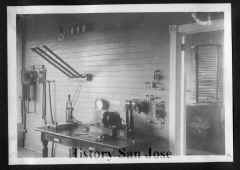
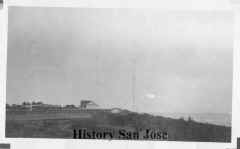

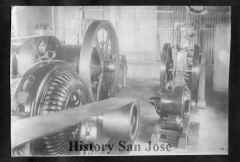
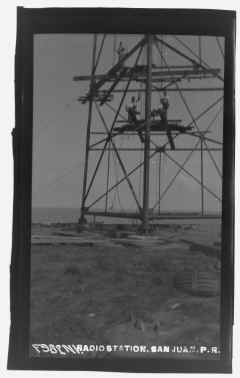
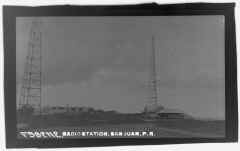
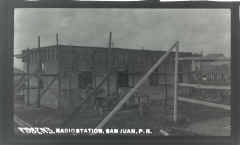
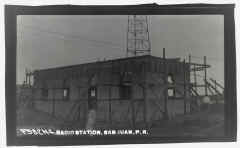
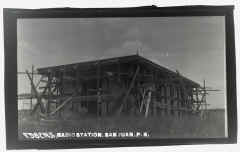
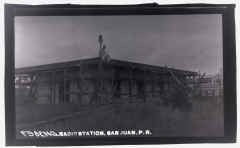
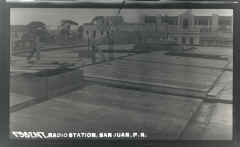
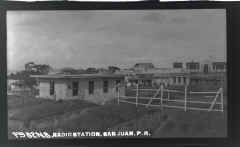
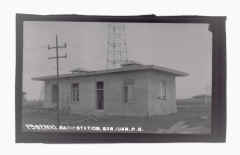
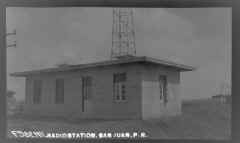
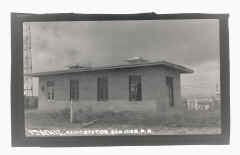
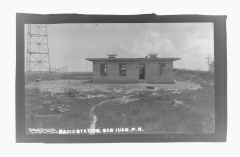
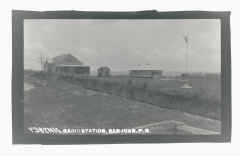
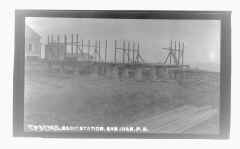
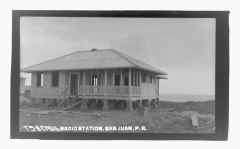
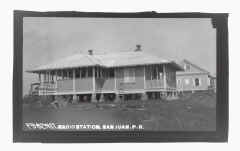
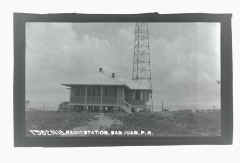
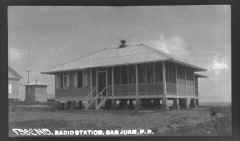
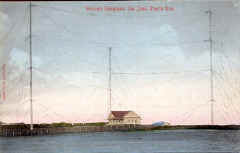
(towers built in 1913)
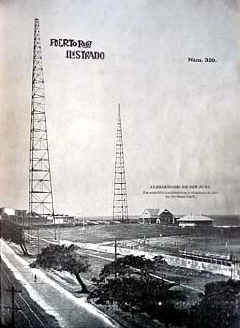
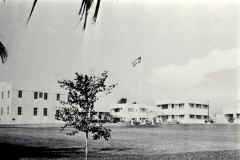
view toward San Geronimo ca. 1939 -
Six-story building is the PANAM Guest house that is mentioned in this
article
- thanks to LCDR Gallardo
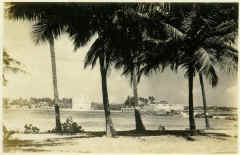
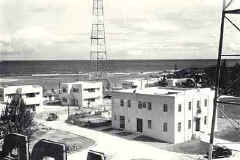
1951 article on Stop 7-1/2 history
- thanks to LCDR Gallardo
Stop 7-1/2, 1951 - the "RADIO STATION" building shown below is on the left and the bombproof building on the right.- thanks to LCDR Gallardo
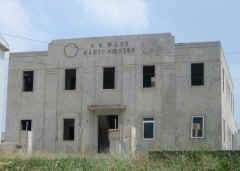
Stop 7-1/2 2007, looking north
"U.S. NAVY RADIO STATION"
- thanks to LCDR Gallardo
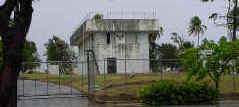
Stop 7-1/2 2003, looking north
- bombproof building
- thanks to LCDR Gallardo
1950 photo of antenna towers
2006 photos of station buildings
2008 photo after building restoration
2010 photos after building restoration
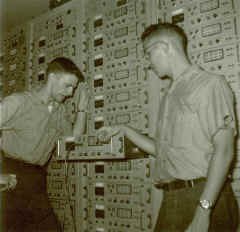
AN/FCC-3 TTY multiplexer, 1958
Russ Barber (L) and Tom Head (R)
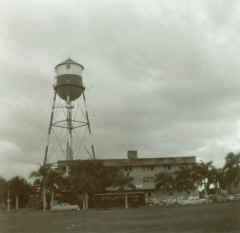
Water tower with UHF antennas, 1958
thanks to Russ Barber
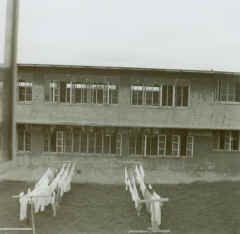
Enlisted barracks, 1958
thanks to Russ Barber
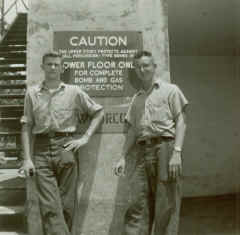
Bombproof building, 1958
thanks to Russ Barber
Cayey Transmitter Site
Cayey Puerto Rico - from 1922 Radio Broadcast magazine thanks to Google
Fort Allen - transferred from US Army and est. 1963 as NRS Ft. Allen - became NCS Puerto Rico
in 1970
Transmitter Site was at Fort Allen, Receiver site was at Salinas - Comm Center moved to Roosevelt Roads in 1980
Fort Allen Transmitter Site
Info from Pete Premo (ET 1963-65) -
We had 15 AN/FRT-22 40KW transmitters driven by Collins
OA-2180 twin sideband suppressed carrier exciters. We received up to four
channels
of encrypted tty which we combined into two channels with TD-97
multiplexers. The FRT-22's used an FRT-26 as an IPA. Each channel
contained up to 16 messages. We ran two mark space tty circuits to
Trinidad. The receiver site used R-390A receivers and TD-98 demultiplexers
to recover the four channels to send to the Com Center.
The transmitter and receiver site used four tower rhombic curtain
arrays for all the main circuits. Once in a while we would do fleet
communication using rotatable log periodics, one of which can be seen in
the background of the "Cookie" picture that I sent you. We had
two circuits each to Washington DC, Balboa in the Panama Canal Zone,
Trinidad, Asmara Ethiopia, Heidelberg Germany and one more that I can't
remember.
The transmitter site had a backup power station that
consisted of four 750 KW Diesel driven generators, two of which could
power the xmtr site and when we did a test alert the other two would
backfeed the rest of the base excluding the comm center which had its own
facility. The units ran so smooth that a nickel would stand on edge on the
engine base while the unit was running.
AN/FRT-22 transmitter
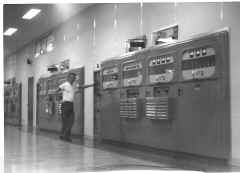
AN/FRT-22 transmitters - thanks to Pete Premo
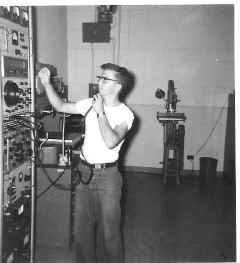
Test Shop - thanks to Pete Premo

Mascot "Cookie" - thanks to Pete Premo
October 1970 Flood Article
- thanks to LCDR Gallardo

Fort Allen barracks - thanks to Bob Kimes
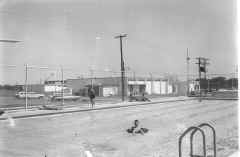
Enlisted Pool - thanks to Pete Premo

Admin Building - thanks to Pete Premo
Salinas Receiver Site
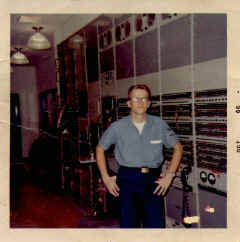
Salinas 1966 - RM3 Al Wiemann
thanks to Al Wiemann
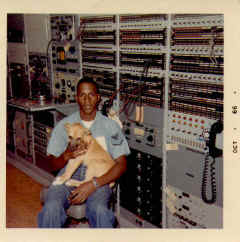
Salinas 1966 - RM3 Clifton Beal w/ "Tulip"
thanks to Al Wiemann
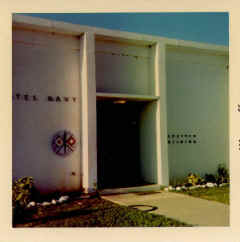
1966 - Salinas receiver building -
thanks to Al Wiemann
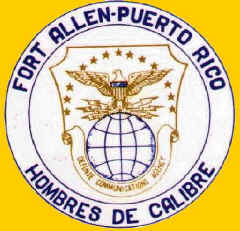
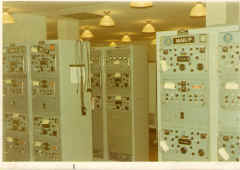
Salinas 1968 - R-390A receivers with CV-157 and CV-116 converters - thanks to George Langenbrunner
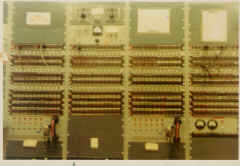
Salinas 1968 - thanks to George Langenbrunner
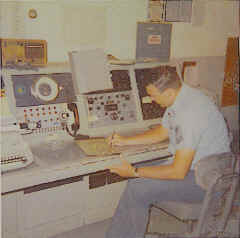
Salinas 1968 - Ralph Norris - thanks to George Langenbrunner
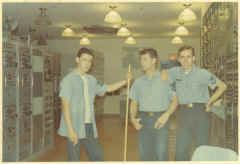
Salinas 1968 - Francis Wood, Rick Lundgren, Art ? - thanks to Bob Kimes
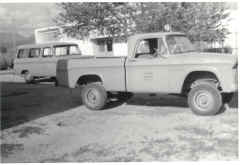
Salinas - station power wagon & Chevy for crew transport - thanks to Bob Kimes
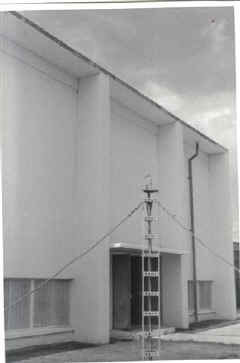
Salinas - emergency antenna rigged before a hurricane - thanks to Bob Kimes
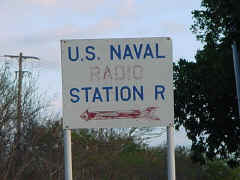
Salinas (2002) - thanks to LCDR Gallardo
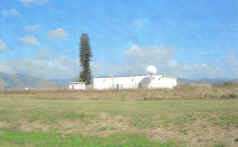
Salinas (2008) - thanks to Bob Kimes
Roosevelt Roads - NCSPR est. 1980, NCTSPR 1991
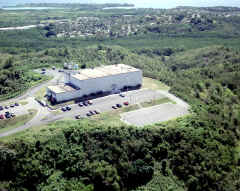
NCTS shared site with AFWTF & TSC
- thanks to Kelly Laur & LCDR Gallardo
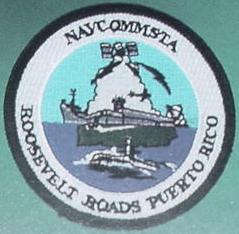
date? - thanks to LCDR Gallardo
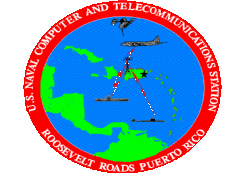
1999 - thanks to LCDR Gallardo
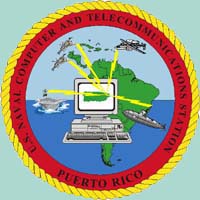
2000 - thanks to LCDR Gallardo
Carolina receiver site 1944-52 (then moved to Sabana Seca)
Sept 14, 1951 VOL. 1 No. 16
- thanks to LCDR Gallardo
- thanks to LCDR Gallardo
Sabana Seca receiver site NavRadSta (R) 1952-71 (became all NSGA then?)
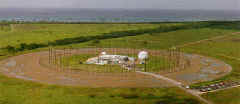
NSGA Wullenweber
- thanks to LCDR Gallardo
Martin Peña transmitter site - 1944-1963 - Please send e-mail if you have more info, photos, or want to contact Leo Ross

location of Martin Peña
- thanks to LCDR Gallardo
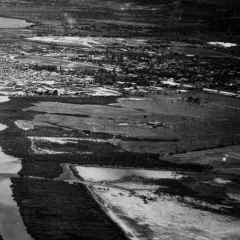
1966 - thanks to LCDR Gallardo
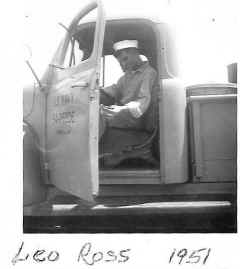
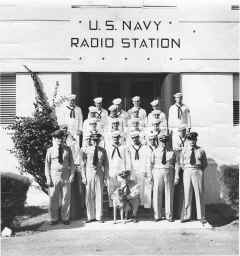
- thanks to Leo Ross
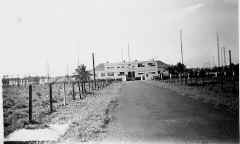
- thanks to Leo Ross
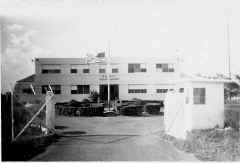
- thanks to Leo Ross
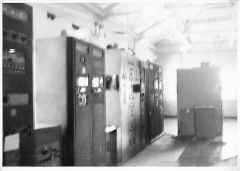
- thanks to Leo Ross
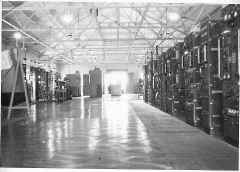
- thanks to Leo Ross
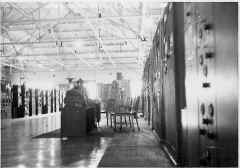
- thanks to Leo Ross
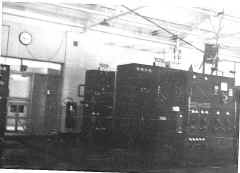
- thanks to Leo Ross
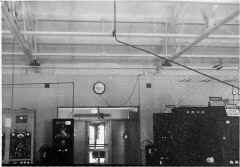
- thanks to Leo Ross

- thanks to Leo Ross, 1954
Isabela transmitter site - 1960's?-?? - turned over to Collins 1976
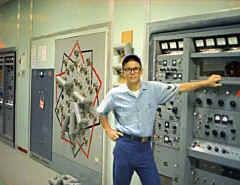
Gary Gramke - transmitter deck

Randy Luikart - control room
Aguada VLF transmitter site- what dates?
Helix House
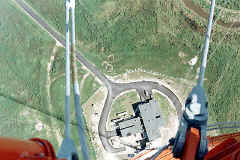
Looking down from the 1205' tower
photo thanks to Gary Gramke
A historic look at NCTS as it prepares to celebrate a century of communications
By Lt. Nichol Shine, NCTS Public Affairs, November 2003
(- thanks to LCDR Gallardo)
As 2003 comes to an end, Naval Computer and Telecommunications Station Puerto Rico will begin celebrating 100 years of service in Puerto Rico. To commemorate the anniversary of the oldest military installation in the Caribbean, this is the story of NCTS. "One thing is sure," said Rear Adm. Alfred Mahan, known as the father of all modern navies, "the Caribbean Sea is the strategic key to the two great oceans, the Atlantic and the Pacific, our own chief maritime frontiers." His sentiment on the importance of the Caribbean region shaped Naval strategy and U.S. foreign policy during the early 1900s and gave birth to the growing need for Naval communications in the Caribbean.
In May 1904, less than five years after the end of the Spanish-American War and the transfer of ownership of Puerto Rico to the United States., Naval Radio Station San Juan was established. The Navy purchased transmitting, receiving and associated ancillary equipment for Key West, Fla., Guantanamo Bay, Cuba; San Juan, P. R. and the Canal Zone for about $58,000, and by late 1905, Puerto Rico was on the air supporting the communications requirements of the ships policing the waters of the Caribbean.
The year 1906 was pivotal for communications and the Caribbean. President Theodore Roosevelt embarked on a 17-day trip, becoming the first president to make an official visit outside the United States, touring Puerto Rico, the Virgin Islands and Panama, emphasizing the relative importance of the Caribbean region. With the opening of the Panama Canal timed coincident to the start of World War One in 1914, the Caribbean became a strategic pivot area in discussions of fleet deployment. The Navy commenced to build the communications infrastructure necessary to support the Caribbean region. Additional communications capabilities were added which included Port Au Prince, Haiti; St. Thomas Virgin Islands; St Croix Virgin Islands, Santo Domingo, Dominican Republic and an additional transmitter at Cayey in Puerto Rico.
In 1916, the pre-war build up hastened the advent of reliable two-way voice communications made possible by a variety of improvements and accelerated the electronic development needed to support the war effort. In 1917, the United States entered the war on the side of the Allies and by 1918, with the war over, huge advances in radio communications were on the verge of going public in the form of radio broadcasts. In 1934, President Franklin Roosevelt visited Puerto Rico and one year later, he created the Puerto Rican Reconstruction Administration as a Great Depression recovery tool. PRRA provided for agricultural development, public works and electrification of the island.
The Navy’s shore communications facilities in the Caribbean region kept pace with the burgeoning field of electronics with modest improvements. Puerto Rico specifically benefited from the infrastructure improvements initiated in 1935. In 1936, Naval Radio Station San Juan relocated its mountain top transmitter in Cayey to a more convenient site in Isla Grande, which was next to the receiver site and communications center in Old San Juan. In 1941, Rear Adm. Raymond A. Spruance assumed command of the newly-created Tenth Naval District headquartered in San Juan. Also in the 1940s Naval Radio Station San Juan was re-designated Naval Communications Station San Juan to more accurately reflect the changing technology and the mission supported. The transmitter site at Isla Grande was moved to Martin Pena, with the receiver site moving to Carolina.
In the 1940s, Roosevelt Roads was developed as the "Pearl Harbor of the Caribbean," with supporting installations at St. Thomas, Culebra, Antigua, Guantanamo Bay, Trinidad, Jamaica, Bahamas, St. Lucia and British Guiana. Unfortunately, most improvements would not even begin until after the devastation at Pearl Harbor, Dec. 7, 1941. When war did descend on the Caribbean in 1942, the Navy was initially unprepared to adequately counter the German U-boat threat. In 1942 alone, the German U-boats sank 250 ships totaling 1.3 million tons.
The dividing line between the closing days of World War Two and the beginning of the Cold War is hazy at best, but communications advances of the 1950’s are clear; computers, computer code, integrated circuits and the conception of a distributed computer network called Advanced Research Projects Agency, which laid the foundation for the modern day internet all were created at this time. To support growing requirements, Naval Communications Station San Juan was reorganized once again, moving its sensitive receivers to Sabana Seca in 1951 to support intelligence collection. Naval Facility Ramey was established in 1954 to provide a state of the art Sound Surveillance System to monitor the Soviet submarine threat. The importance of the Caribbean region was reaffirmed by President John F. Kennedy’s visit to Puerto Rico in 1961, following the Bay of Pigs. In 1962, the Cuban missile crisis proved projection of naval power in the Caribbean region had never been more important. That same year Navy communications found a new home on the southern coast of Puerto Rico. Fort Allen, a former Army base, was re-designated as U.S. Naval Radio Station Fort Allen in 1963. Also in 1963, the Arecibo Observatory opened as the world’s largest radio telescope.
In the 1970s, Naval Communications Station San Juan was relocated to Fort Allen and re-designated Naval Communications Station Puerto Rico. The communications center remained at Fort Allen throughout the next decade and operation and maintenance of the Navy’s high frequency transmitter site in Isabela, on the northwest coast of Puerto Rico was contracted out to Collins International Service Company in 1976.
Two terrorist attacks in 1979, one in Isabela and one in Sabana Seca resulting in one death, two injuries and minor damage to equipment caused a relocation of Naval Communications Station Puerto Rico to a new, state-of-the-art communications facility at Naval Station Roosevelt Roads. The 1980s marked an incredible period of advances in computers and telecommunications causing the communications mission in Puerto Rico to expand with the growth of the fleet toward a 600-ship Navy, reactivation of the low frequency transmitter in Aguada in 1984 and a corresponding increase in message processing. NCSPR processed more than one million messages in the first eight months of 1989. The Defense Communications System, the pre-cursor to Defense Information Systems Agency, bestowed communications excellence awards on Naval Communications Station Puerto Rico in competitive categories. NCSPR achieved first or second place recognition from 1986 through 1989.
Naval Communications Station Puerto Rico became Naval Computer and Telecommunications Station Puerto Rico in 1991. Greater importance placed on secure, capable and survivable communications required NCTSPR and DISA cooperation to upgrade connectivity in Puerto Rico. The Puerto Rico Area Wideband System, along with many other infrastructure improvements in the 1990s, provided the robust capability required to support the Navy’s Network Centric Warfare mission as the millennium approached.
As its centennial celebration approaches, Naval Computer and Telecommunications Station Puerto Rico is proud to honor the legacy of the communicators, technicians, engineers and craftsman that came before. The station proudly carries the rich tradition of 100 years of communications excellence in the Caribbean and into the future.

